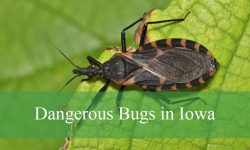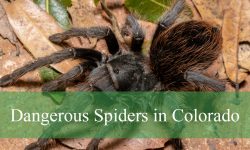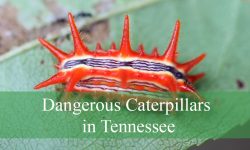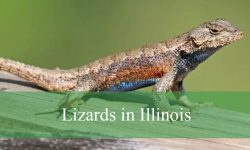Porcupines are one of the most unique and intriguing mammals found across North America, and Ohio is no exception. While porcupines are often associated with the dense forests of northern states, their presence in Ohio offers fascinating insights into how this species adapts to a more temperate climate and diverse habitats.
This comprehensive article explores everything you need to know about porcupines in Ohio, including their biology, habitat preferences, diet, behavior, interactions with humans, and ecological importance. Whether you’re a nature enthusiast, landowner, or simply curious about wildlife, this guide will deepen your understanding of these fascinating creatures.
What Are Porcupines? An Introduction
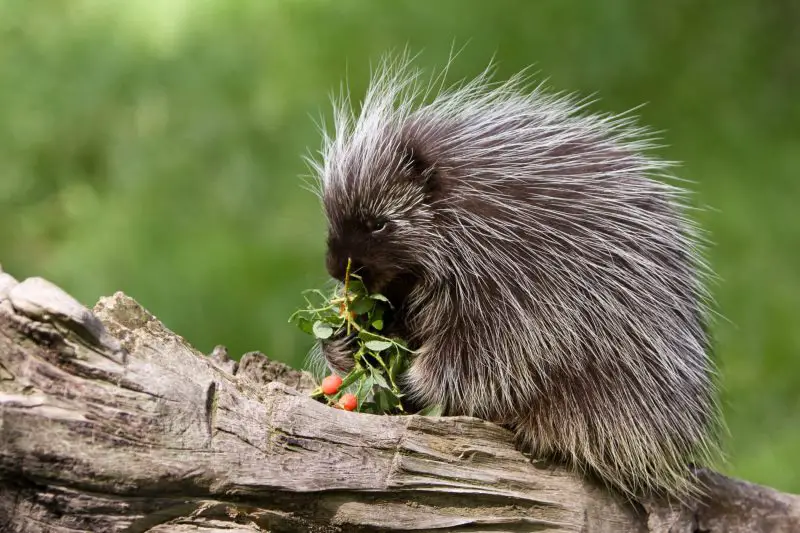
Porcupines (family Erethizontidae) are rodents best known for their coat of sharp quills—modified hairs that serve as their primary defense mechanism. The species found in Ohio is the North American porcupine (Erethizon dorsatum), notable for its slow movements, nocturnal lifestyle, and strong association with forested habitats. Despite their formidable appearance, porcupines are generally non-aggressive and rely on their quills as a passive defense rather than attack.
These animals have been part of North American ecosystems for thousands of years and play a vital role in forest dynamics. Ohio’s porcupines, although less abundant than in northern states, have adapted to the state’s mixed hardwood forests, showing a unique set of behaviors and ecological interactions.
Physical Characteristics of Porcupines in Ohio
Ohio porcupines typically measure between 25 to 36 inches in length, including their tails, and weigh from 12 to 35 pounds depending on age, sex, and season. Their most striking feature is the thousands of quills covering their back, sides, and tail. These quills are about 1 to 3 inches long, hollow, and have backward-facing barbs that embed firmly into any attacker’s skin.
Underneath the quills lies a thick layer of coarse fur that provides insulation, crucial for surviving Ohio’s variable climate, including cold winters. Porcupines have large, strong claws with rough pads on their feet, which enable them to climb trees skillfully and grip bark firmly. Their large, chisel-like incisor teeth grow continuously throughout their lives, allowing them to gnaw through tough plant material like bark and twigs without wearing down their teeth.
Their eyes are relatively small and adapted for low-light conditions, supporting their primarily nocturnal habits. Their sense of smell and hearing, however, are well-developed, helping them detect food and predators in dense forests.
Habitat and Distribution in Ohio
While porcupines are widely distributed in the northern United States and Canada, their populations in Ohio are patchier and more localized, mainly concentrated in the southern and southeastern parts of the state. Ohio’s mixed hardwood forests, which consist of oak, maple, hickory, and pine species, provide ideal habitat for porcupines.
Porcupines prefer mature forests with abundant tree cover and a rich understory, which offer both shelter and food. They are semi-arboreal, spending significant time in trees for foraging and resting, but also travel on the ground to find new food sources or mates.
During winter, porcupines rely heavily on coniferous trees such as Eastern white pine and hemlock, which retain their needles and bark, providing vital nutrition when deciduous trees lose their leaves. Hollow trees, rock crevices, and fallen logs serve as daytime refuges from predators and harsh weather.
Human development has fragmented many forested areas in Ohio, but porcupines have shown adaptability by inhabiting suburban woodlands and protected parks. Despite this, habitat loss remains one of the biggest challenges for their long-term survival in the region.
Feeding Habits and Diet
Porcupines are herbivores with a diet primarily composed of woody plants. In Ohio, their preferred foods include the bark, twigs, and buds of deciduous trees like maple, oak, and birch, as well as conifers like pine and hemlock. They also eat leaves, berries, and other vegetation, especially in the warmer months.
During the fall and winter, when other vegetation is scarce, porcupines feed heavily on the cambium—the soft layer beneath tree bark—which provides essential nutrients. This seasonal bark stripping can sometimes cause damage to young or cultivated trees, making porcupines a concern for some landowners and orchard managers.
Porcupines’ powerful jaws and continuously growing incisors allow them to gnaw through tough bark and even wooden structures such as fences and sheds if accessible. This behavior occasionally leads to conflicts with humans, though it is natural for their nutritional needs.
Porcupines are mostly nocturnal feeders, emerging at dusk to search for food. Their slow movements and tendency to feed quietly make them difficult to spot, but signs such as bark stripped from trees and quills on the ground often indicate their presence.
Behavior and Lifestyle Patterns
Porcupines lead predominantly solitary lives, except during the brief breeding season or when mothers care for their young. They are generally slow and deliberate in their movements, which makes them vulnerable to some predators, but their quills provide an effective deterrent.
At night, porcupines actively forage for food, moving through the forest canopy or along the ground. Their excellent climbing abilities enable them to reach high branches for fresh buds and leaves. They communicate through a range of sounds including grunts, teeth chattering, and occasional warning screams when threatened.
When confronted by a predator, porcupines exhibit unique defensive behaviors. They will raise their quills, make hissing noises, and lash their tails toward the attacker, sometimes embedding quills into the predator’s skin. Porcupines can also release a strong, unpleasant odor from glands to discourage pursuit.
During the day, porcupines rest in sheltered locations such as tree hollows, rock crevices, or dense thickets, minimizing exposure to predators and harsh weather conditions.
Reproduction and Life Cycle
Porcupines in Ohio breed once a year, usually in the fall. After a gestation period of about seven months, females give birth to a single offspring called a porcupette, typically in late spring or early summer. Porcupettes are born with soft quills that harden within hours, providing immediate protection.
The mother invests significant care in her young, nursing and protecting the porcupette for several months. During this period, the young porcupine learns essential survival skills such as climbing and foraging.
Porcupines generally reach sexual maturity after about two years. In the wild, their average lifespan ranges from 5 to 7 years, though some individuals may live longer under favorable conditions.
Predators and Natural Threats in Ohio
Although porcupines possess formidable quills, they are not invulnerable. Natural predators in Ohio include fishers, bobcats, coyotes, and large owls. Among these, fishers are particularly adept hunters; they have learned to flip porcupines onto their backs to attack the vulnerable, unquilled belly.
Other threats include harsh winters, disease, and parasitic infections, which can reduce survival rates. Road mortality also poses a significant risk, especially where porcupine habitats intersect with human developments.
Human activities such as deforestation, urban expansion, and trapping further threaten local porcupine populations. Nonetheless, porcupines continue to persist in many of Ohio’s forested areas, benefiting from conservation efforts and protected lands.
Porcupines and Human Interactions in Ohio
Interactions between porcupines and humans in Ohio are generally limited but can occasionally become problematic. Porcupines are known to cause damage to ornamental trees, young fruit orchards, and wooden structures by gnawing on bark and wood.
Additionally, there are reports of porcupines chewing vehicle wiring, leading to costly repairs. These behaviors sometimes label them as nuisances, prompting residents to seek wildlife control assistance.
Despite this, porcupines pose little direct threat to humans. They are shy and prefer to avoid confrontation. Wildlife agencies recommend non-lethal methods such as fencing, repellents, and habitat modification to prevent conflicts.
Educational programs throughout Ohio encourage coexistence and emphasize the ecological benefits porcupines provide. Respecting these animals and understanding their role in nature fosters a healthier relationship between humans and wildlife.
Ecological Role of Porcupines in Ohio’s Forests
Porcupines play a crucial role in maintaining healthy forest ecosystems in Ohio. By feeding on tree bark and woody plants, they influence forest composition and promote plant diversity. Their selective feeding can limit the dominance of certain tree species, allowing others to flourish.
Furthermore, the wounds they create on trees facilitate the entry of fungi and insects, which contribute to nutrient cycling and create habitats for other organisms. Their feeding activity also aids in controlling underbrush density, improving conditions for tree seedlings and other plants.
As prey for native predators, porcupines support the food web and help sustain populations of carnivorous mammals and birds of prey.
How to Observe Porcupines in Ohio
Spotting a porcupine in Ohio requires patience and a bit of luck, as these creatures are primarily nocturnal and secretive. The best times to observe porcupines are at dusk or early morning when they are most active.
Signs of porcupine presence include stripped bark on trees, piles of quills on the forest floor, and gnawed wooden objects. Listening for distinctive rustling or grunting noises can also aid in locating them.
When observing porcupines, it is important to keep a safe distance to avoid startling them or risking injury from their quills.
Conservation Status and Future Outlook in Ohio
Currently, porcupines in Ohio are not classified as endangered or threatened, but their populations are not as widespread or dense as in northern states. Continued habitat loss and human-wildlife conflicts could impact their numbers if not managed carefully.
Conservation efforts focus on preserving mature forests, promoting coexistence with humans, and monitoring populations to ensure their health and stability. As Ohio balances development with environmental protection, the future of porcupines depends on maintaining suitable habitat and educating the public on their importance.
Porcupines remain a valuable part of Ohio’s natural heritage, symbolizing the resilience and diversity of the state’s wildlife.
FAQs about Porcupines in Ohio
Are porcupines common in Ohio?
Porcupines are not as common in Ohio as in northern states, but they are present in forested regions, especially in southeastern and rural areas. Their population is more scattered and localized due to habitat limitations and human development.
What type of porcupine lives in Ohio?
The species found in Ohio is the North American porcupine (Erethizon dorsatum). It is the only porcupine species native to the U.S. and is known for its quills, tree-climbing ability, and herbivorous diet.
Are porcupines dangerous to humans?
Porcupines are generally not dangerous to humans and prefer to avoid contact. They do not throw their quills, but if threatened or touched, they may embed their barbed quills defensively. Keeping a safe distance is recommended.
What do porcupines eat in Ohio?
In Ohio, porcupines feed on tree bark, twigs, buds, and leaves from trees like oak, maple, and pine. In spring and summer, they may also eat berries, herbs, and garden vegetation when available.
Where can I see porcupines in the wild in Ohio?
Porcupines are mostly active at night and can be found in mature forests, especially in southern and southeastern Ohio. Look for bark-stripped trees, quills on trails, or signs of gnawing near wooded areas.
Can porcupines damage property?
Yes, porcupines may chew on wooden structures, garden plants, or even vehicle parts like rubber hoses or wiring. This can cause property damage, though simple deterrents can prevent most issues.
What predators hunt porcupines in Ohio?
Natural predators of porcupines in Ohio include fishers, bobcats, coyotes, and large birds of prey such as great horned owls. Fishers are especially skilled at hunting them by flipping them onto their vulnerable undersides.
How do porcupines protect themselves?
Porcupines raise their quills when threatened, make warning sounds, and may lash out with their tail. Their quills have barbs that embed into a predator’s skin, making them highly effective for defense.
Are porcupines protected in Ohio?
Porcupines are not considered endangered or protected in Ohio but are an important part of the state’s wildlife. Managing habitat and promoting peaceful coexistence help maintain stable populations.
How long do porcupines live in the wild?
Porcupines typically live between 5 to 7 years in the wild, although some may live longer. Their survival depends on habitat quality, food availability, and the presence of natural predators.

